Dibyajyoti Sarma's Blog, page 40
June 8, 2015
Paddington
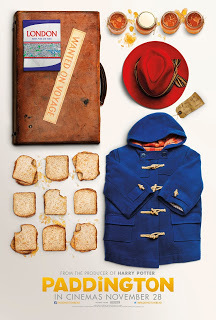 On paper, Paddington looks like the fodder for a family friendly animation film. It’s about a bear from Darkest Peru, who can talk in English and has a specially taste for marmalade (there is a back-story how an English explorer taught his uncle and aunt speak English), who comes to English to find a family to live with. He does find a family after much adventure. The problem is the family is a human family, and the film is a live action film, with real actors, apart from the bear, which is a brilliant CGI creation voiced brilliantly by Ben Whishaw.
On paper, Paddington looks like the fodder for a family friendly animation film. It’s about a bear from Darkest Peru, who can talk in English and has a specially taste for marmalade (there is a back-story how an English explorer taught his uncle and aunt speak English), who comes to English to find a family to live with. He does find a family after much adventure. The problem is the family is a human family, and the film is a live action film, with real actors, apart from the bear, which is a brilliant CGI creation voiced brilliantly by Ben Whishaw.I learned later that Paddington is a beloved character from British children’s literature, and as such, I am sure most audiences would be able to suspend their disbelief in handling a talking bear. The talking bear was least of my problem. My problem was how nonchalantly all the other characters accept the bear’s ability to talk.
If you can get past this problem, and if you can believe Nicole Kidman as the villainous Millicent, the movie is actually a fun ride, with some brilliant set-pieces, but nothing that you haven’t seen before, aside from a few really funny gags (like Paddington carrying a dog to climb down the elevator, because there is a signboard saying, ‘carry the dog’!), and the presence of Sally Hawkins and Julie Walters.
/
Paddington Bear is a fictional character in children's literature. He first appeared on 13 October 1958 and has featured in more than twenty books written by Michael Bond and illustrated by Peggy Fortnum and other artists. The friendly bear from deepest, darkest Peru—with his old hat, battered suitcase (complete with a secret compartment, enabling it to hold more items than it would at first appear), duffle coat and love of marmalade—has become a classic character from English children's literature. Paddington books have been translated into 30 languages across 70 titles and sold more than 30 million copies worldwide.
Paddington is an anthropomorphised spectacled bear. He is always polite – addressing people as "Mr", "Mrs" and "Miss", rarely by first names – and kind-hearted, though he inflicts hard stares on those who incur his disapproval. He has an endless capacity for innocently getting into trouble, but he is known to "try so hard to get things right." He was discovered in Paddington Station, London, by the (human) Brown family who adopted him, and thus he gives his full name as "Paddington Brown".
More Here/
/
Paddington is a 2014 comedy film, directed by Paul King, written by King and Hamish McColl, and produced by David Heyman. Based on Paddington Bear by Michael Bond, the film stars Ben Whishaw as the voice of the title character, along with Hugh Bonneville, Sally Hawkins, Julie Walters, and Nicole Kidman in live-action roles. It was released in the United Kingdom on 28 November 2014 and received mostly positive reviews from film critics.
More Here/
Published on June 08, 2015 03:29
June 4, 2015
Yeh Kashmir Hain
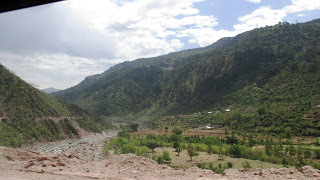
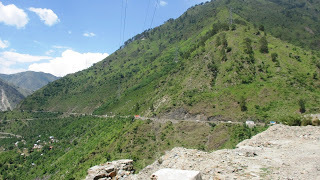
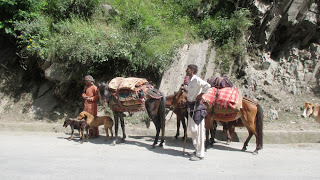
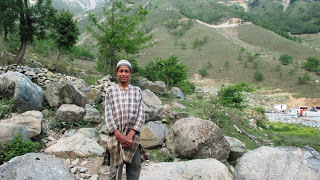
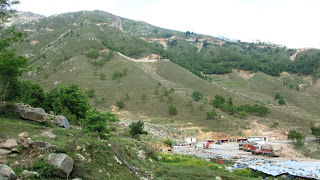
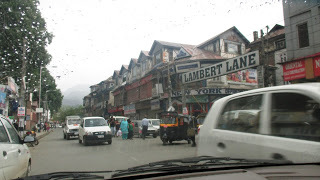
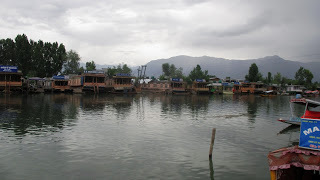
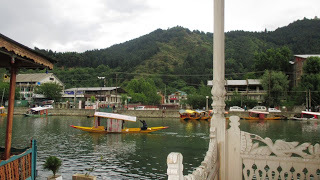

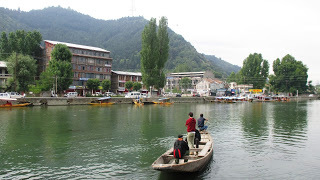
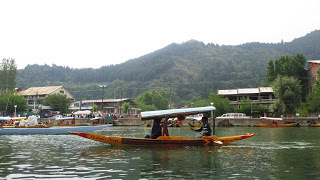
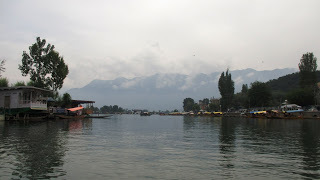
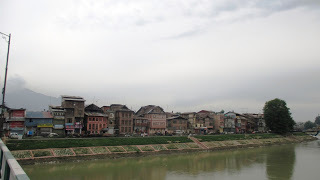
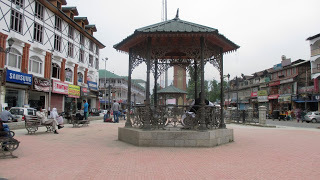
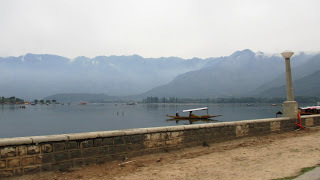
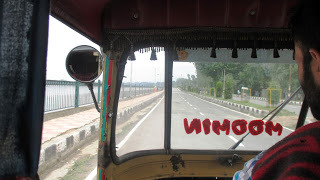
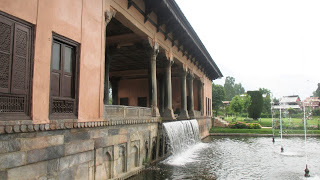

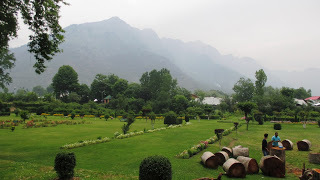

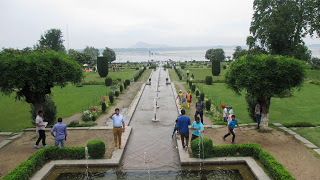
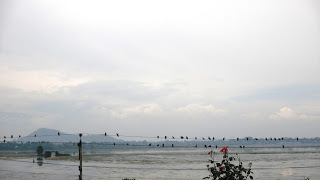
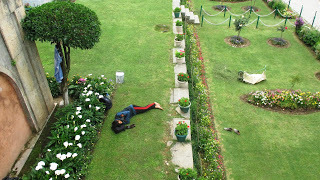
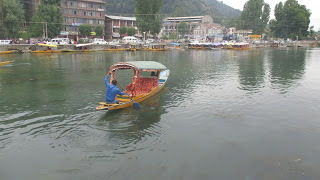 The Assamese blockbuster film ‘Pita Putra’ (1987). A happy family of parents with three children, two boys and a girl. The elder, a bookworm, wants to go to Kashmir for the summer vacation because he has read about it in his Geography book that it the Heaven on Earth (you know, the ‘ami asto’ line and all…). The honest father cannot afford the trip. Instead, they choose the next best option, a trip to the neighbouring Shillong, with the promise that they would go to Kashmir the next time. They sing a song in Shillong (‘Look at the snow falling, look at the dusk falling…’) and once they are home, in Guwahati, I guess, the boy is diagnosed with a terminal disease, and he dies, still talking about his dream to visit Kashmir. The poor, honest father, who could not afford his son’s treatment, goes bonkers and joins hand with the mafia, to be a mafia don himself, leading to the major conflict of the film, his showdown with his idealistic surviving son…
The Assamese blockbuster film ‘Pita Putra’ (1987). A happy family of parents with three children, two boys and a girl. The elder, a bookworm, wants to go to Kashmir for the summer vacation because he has read about it in his Geography book that it the Heaven on Earth (you know, the ‘ami asto’ line and all…). The honest father cannot afford the trip. Instead, they choose the next best option, a trip to the neighbouring Shillong, with the promise that they would go to Kashmir the next time. They sing a song in Shillong (‘Look at the snow falling, look at the dusk falling…’) and once they are home, in Guwahati, I guess, the boy is diagnosed with a terminal disease, and he dies, still talking about his dream to visit Kashmir. The poor, honest father, who could not afford his son’s treatment, goes bonkers and joins hand with the mafia, to be a mafia don himself, leading to the major conflict of the film, his showdown with his idealistic surviving son…Since I saw the movie during its theatrical release, like the dead boy, I had this one dream, to visit Kashmir. The plan never came to fruition in all those years (the ongoing stories about the militancy was least of the problem), and I sort of moved on. And then, I got this chance, all of a sudden, to spend a day on the road between Jammu and Srinagar, and one-and-a-half day in Srinagar. It was a whirlwind trip, I did not even get to do most of the touristy stuff, but, I must confess, the trip was worth the trouble. And, what they say about the place, its idyllic beauty, is all true.
Today, in Srinagar, militancy is a distant memory. However, what still haunts the average Srinagar resident is the flood in September 2014. In two weeks, the rushing water did more harm to the city than the militancy did in years. Yet, as resilient as the Kashmiri people are, they have fought back and have rebuilt the city, from the mud left by the flood, as it were, with very little government help…
Everywhere I went, the willing local residents recounted the tales of the devastating flood that took place in September 2014. It was like visiting a battlefield after the war was over. Everywhere I went, people will show me the spots where the flood caused havoc. “The water was up to the window,” one would say. “The water near Jhelum was until this point during the flood,” another would add.
Yet, the local residents have clearly moved on. While counting the loss, they are looking forward to the future, where they can thrive. The militancy in the valley is just a nightmare. The worse is over. And, the local residents have achieved this without must of an outside help.
When it came to help, they were critical of the government, who they claimed never helped the local people. There was almost no compensation after the flood, in which the city suffered a major loss. Whenever there was compensation, it was meager.
Published on June 04, 2015 04:55
May 28, 2015
Chocolat
Two women directors, Claire Denis and Caroline Link. Two stories set in colonial Africa. Two movies see from the point of view of a young white girl. Two stories with a black servant in a white household in the focus. Two stories looking at the past, trying to decode it. Yet, so different are the two films! Link’s Nowhere in Africa is, at the heart of it, is a breathtaking romantic saga of lost childhood. It is justifiably so, hence the Oscar for Best Foreign Language film. But, Denis’s Chocolat is a strange thing, of ethereal beauty yet ruthlessly political, acutely aware of the racial past and white men’s connect with the black skin. Though I love ‘Nowhere in Africa’, I have a special admiration for ‘Chocolat’, because of how the film looks, unflinchingly at the issue.
Published on May 28, 2015 05:03
May 27, 2015
The Embrace of the Serpent
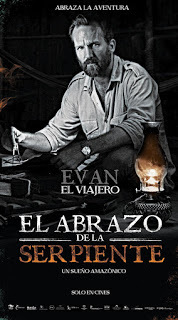 The reason I follow the Cannes Film Festival, every damn year, is because it gives me an early signal of what are movies in the coming days that I really want to watch. There are several films from this year’s roaster that I want to see, including Audiard’s ‘Dheepan’. I am a big Audiard fan.
The reason I follow the Cannes Film Festival, every damn year, is because it gives me an early signal of what are movies in the coming days that I really want to watch. There are several films from this year’s roaster that I want to see, including Audiard’s ‘Dheepan’. I am a big Audiard fan. But, more than anything else, I want to see this film: The Embrace of the Serpent by Colombian director Ciro Guerra. The trailer looks breathtaking and the early reviews are rapturous.
Keep your eyes open.
/
\
“The Embrace of the Serpent,” Colombian director Ciro Guerra’s visually rich, black-and-white adventure saga about the ravages of colonialism in the Amazon, won the top Art Cinema Award at the 47th Directors’ Fortnight at Cannes on Friday.
A follow-up to Guerra’s 2009 Un Certain Regard entry, “The Wind Journeys,” “Embrace of the Serpent” (which is being sold by Films Boutique) follows the parallel journeys of two different ethnologists, both searching for a rare flower deemed sacred by Colombia’s indigenous population. Along with Thursday’s honors for the Critics’ Week entries “Paulina” (from Argentina’s Santiago Mitre) and “Land and Shade” (from Colombia’s Cesar Acevedo), the victory for Guerra’s film suggests it’s been a particularly strong festival for Latin American cinema, despite initial concerns that the region might be underrepresented, at least in the official selection.
The Fortnight’s SACD Prize, presented every year to a French-language film by the Society of Dramatic Authors and Composers, was awarded to “My Golden Days,” Arnaud Desplechin’s emotionally resonant coming-of-age prequel to his 1996 Cannes entry, “My Sex Life, or … How I Got Into an Argument.” The award represents a vindication of sorts for the veteran French auteur, whose film premiered to widespread acclaim in Directors’ Fortnight after having been denied a slot in the official competition.
“My Golden Days,” which is being sold internationally by Wild Bunch, marks the screen debuts of young leads Quentin Dolmaire and Lou Roy-Lecollinet. The film opened in French theaters on Wednesday.
“Mustang,” a debut feature from Turkey’s Deniz Gamze Erguven, won the Europa Cinemas Label for best European film in the Fortnight. The film, which is sold and co-produced by Kinology, is set in a remote Black Sea village where five young sisters are forced to suppress their blossoming sexuality. Cohen Media Group acquired North American rights to the film this week, following its festival screenings.
MORE HERE/
/
A visually mesmerizing exploration of man, nature and the destructive powers of colonialism, Embrace of the Serpent (El abrazo de la serpiente) marks an impressively realized third feature from Colombian writer-director Ciro Guerra, who last came to Cannes in 2009 with his critically lauded drama, The Wind Journeys. Featuring knockout black-and-white cinematography and an array of breathtaking locations, this ethnographic journey into the heart of the Amazon – with a whopping total of nine different languages spoken on screen – should see additional festival play and a few niche art house pickups after its premiere at the Directors’ Fortnight.
Reminiscent of Miguel Gomes’ Tabu in its recreation of colonial events through a richly nostalgic modern prism, the story (written by Guerra and Jacques Toulemonde) was inspired by the journals of two explorers who traveled through the Colombian Amazon during the last century: the German Theodor Koch-Grunberg and the American Richard Evans Schultes, here transformed into the characters Theodor (Jan Bijvoet from Borgman) and Evan (Brionne Davis).
Cutting between 1909 and the 1940s, the parallel narratives chart each man’s voyage down a similar stretch of river as they search for a rare flower, the yakruna, with alleged healing powers. On both journeys they are guided by the same forlorn native shaman, Karamakate (Nilbio Torres in ’09, Antonio Bolivar in the ‘40s) – the surviving member of a tribe that was wiped out by years of brutal foreign invasions.
Filled with regret over the loss of his people and unable to fully trust the men he agrees to accompany downriver, Karamakate ultimately proves an invaluable resource to the explorers, both of whom are curious about his culture and willing to go along for the ride without knowing where they’re headed. Theodor, who’s suffering from a fatal illness, is especially dependent on the witch doctor’s powers, taking hits of an herbal medicine (that could be some form of cocaine) in order to stay alive.
Following the dueling voyages as they head further into the heart of Amazonian darkness, Guerra and talented DP David Gallego use pristine widescreen imagery to underline the beauty of a place that’s slowly and sadly headed toward oblivion. For every magnificent stretch of forest and river, there are telling signs of destruction, such as a rubber plantation where a mutilated worker begs to be put out of his misery, or a Catholic mission that over the years becomes a decadent fiefdom ruled by a religious quack – an early version of the Kurtz compound in Apocalypse Now.
MORE HERE/
/
The sublime and the insane make engaging traveling companions in Embrace Of The Serpent (El abrazo de la serpiente), which traces the journey of two different scientists across the Amazon, their destination just as rewarding as the arduous road to get there. Colombian director Ciro Guerra (The Wind Journeys) has some familiar things to say about respecting the natural world and not overvaluing technological advancement, but this widescreen black-and-white odyssey, which crosscuts between two time periods, slowly but satisfyingly transitions from realism to the fantastical, even the cosmic.
Screening in Directors’ Fortnight, Embrace Of The Serpent looks to be a favourite on the festival circuit, whereas theatrical prospects may be a far trickier proposition. With no stars, a period time setting and a black-and-white colour scheme, this defiantly art-house offering will need glowing reviews to make commercial headway. That said, Embrace’s increasingly wacked-out tenor might attract genre crowds, which could embrace the film’s brand of stoned strangeness.
The movie takes inspiration from two men, Theodor Koch-Grunberg and Richard Evans Schultes who, separately, traveled down the Amazon in the early 20th Century looking for information about the primitive cultures that lived there. That factual jumping-off point allows Guerra to construct an almost mythical tale that has more than a passing resemblance to Joseph Conrad’s Heart Of Darkness — or, at the very least, Francis Ford Coppola’s audacious adaptation, Apocalypse Now.
In Embrace, Theo (Borgman’s Jan Bijvoet) travels with Amazonian shaman Karamakate (Nilbio Torres) by boat in search of a fabled plant with healing properties, while 40 years later Evan (Brionne Davis) takes the same path with an older Karamakate (Antonio Bolívar), hoping to complete Theo’s research.
Judged by its opening reels, Embrace seems to be a gorgeous-looking but rote travelogue where supposedly enlightened white Westerners discover how little they understand about nature’s elemental powers. (Cinematographer David Gallego gives the locations an otherworldly quality, the black-and-white not just suggesting the past but, more specifically, a land out of time.) But Embrace’s somewhat pedestrian opening is a bit of a feint, luring us into the expectation of one kind of story when, in fact, Guerra plans to go much darker and more philosophical than we imagine.
In keeping with the film’s folktale-like simplicity, the performances are unadorned, bordering on stoic. Bijvoet plays Theo as a dedicated scientist who is about to realise that his years of painstaking research can’t prepare him for what the jungle has in store. However, he’s not a cartoon villain — an easy fill-in for the stereotypical Conquering White Man — and neither is Evan, who Davis portrays with sympathy while hinting at the man’s overconfidence in his own intellect. Both Karamakate actors perhaps oversell the character’s grim-faced solemnity, but their calm, powerful faces are enough to suggest this shaman’s deep wells of wisdom and wizardry.
MORE HERE/
Published on May 27, 2015 23:58
May 17, 2015
‘Tirap Simanta’ by Bhupen Hazarika
For a few days now, I am obsessing over this song, ‘Tirap Simanta’ by Bhupen Hazarika. While Assam continues to have a complicated relationship with Arunachal Pradesh, once a part of its own, this song by Bhupen Hazarika, written in 1970s (I am guessing) offers an example how culture can bridge the gap that geography divides and politics isolates. This song is a tribute to the local inhabitants of the Tirap district of Arunachal Pradesh, the Noctes and Wanghus.
The following is a freewheeling translation of the song, with the use of local, indigenous words of the local communities intact, since the strength of the song lies in the use of those words, which have no easy translation. The song, composed by Hazarika, is a heady mix of Asomiya and the local words. I wanted to see what happens when we convert the Assamese into English and keep the local words as they are…
The border of Tirap, the Tirap border
Where there is no end to its beauty
Nocte, Wangchu, Tangsha, Ukli, I have
Witnessed the horizon of their sylvan minds
Look, there is the teen of Tirap, Wangchu
On this fist is the sharp javelin paklu
On his neck is the tilik moni, on his head the kasan
Wearing a small fanat dances showan
Moving their hips covered with short lishas
The young women move with what rhythm
Behind the clouds that embrace the terrible
Hills in a kiss, there appears the sun dimmed
The border of Tirap
Faraway, faraway, I notice the Khumsa valley
Look, there is the muscular Nocte youth
Wearing the samsong shirt
On his head is the khapak of cane and on
His waist a colourful khatori
He is busy in the salt mine
A valley of Tirap is Changlang
Where resides the simple folks Lung Chang
Look, there on the heart of the Tirap River
A hanging bridge made of bamboo
And a Tangcha farmer passes by
Look, they are descending in groups
Carrying the deer on their backs, they are descending
Asked, Kakai, where do you go?
Said, I go to the Margherita haat
Otherwise, all our efforts will be a waste
From the days of Ahom Swargadeo, carrying the salt
Descended the Nocte
Even in the old days, Sri Sri Ram Aata had
Preached before the Nocte king…
The following is a freewheeling translation of the song, with the use of local, indigenous words of the local communities intact, since the strength of the song lies in the use of those words, which have no easy translation. The song, composed by Hazarika, is a heady mix of Asomiya and the local words. I wanted to see what happens when we convert the Assamese into English and keep the local words as they are…
The border of Tirap, the Tirap border
Where there is no end to its beauty
Nocte, Wangchu, Tangsha, Ukli, I have
Witnessed the horizon of their sylvan minds
Look, there is the teen of Tirap, Wangchu
On this fist is the sharp javelin paklu
On his neck is the tilik moni, on his head the kasan
Wearing a small fanat dances showan
Moving their hips covered with short lishas
The young women move with what rhythm
Behind the clouds that embrace the terrible
Hills in a kiss, there appears the sun dimmed
The border of Tirap
Faraway, faraway, I notice the Khumsa valley
Look, there is the muscular Nocte youth
Wearing the samsong shirt
On his head is the khapak of cane and on
His waist a colourful khatori
He is busy in the salt mine
A valley of Tirap is Changlang
Where resides the simple folks Lung Chang
Look, there on the heart of the Tirap River
A hanging bridge made of bamboo
And a Tangcha farmer passes by
Look, they are descending in groups
Carrying the deer on their backs, they are descending
Asked, Kakai, where do you go?
Said, I go to the Margherita haat
Otherwise, all our efforts will be a waste
From the days of Ahom Swargadeo, carrying the salt
Descended the Nocte
Even in the old days, Sri Sri Ram Aata had
Preached before the Nocte king…
Published on May 17, 2015 11:24
May 13, 2015
Why copyediting/
To use a crude analogy, copyediting is like makeup and a copyeditor is like a makeup artist. If you are beautiful, makeup can make you look more beautiful; if you are not-so-beautiful, makeup can make you look presentable. Same is the case with copyediting. A good copyediting can make even a badly written text presentable.
Unfortunately, however, this analogy cannot begin to explain the real importance of copyediting. A copyeditor can be a writer’s sounding board, his filter of thought through which he would communicate with the world, his first critic and his last guide in the final process of writing.
Writing is a lonely job, and the end goal of a writer is to reach out to a larger public. Yet, it is a dangerous because once a book reaches the readers a writer cannot take back whatever he had written.
This makes the copyeditor’s job all the more difficult. Besides correcting the grammar and language, a copyeditor’s job demands extreme empathy, both for the author in question and his prospective readers. A copyeditor must understand what the author is trying to convey and he must understand what the audience would like to read.
So, apart from a keen eye on the language, a copyeditor must also have a deep faculty for comprehension. He should not only understand the subject in question, he should also understand how the subject can be best presented.
A copyeditor’s job is not just to prefect the presentation, the language, the grammar, the nuances; he should also be able to fine-tune the raw voice of the author.
In this sense, a copyeditor is no less than a vocal instructor. The singer is gifted with the singing voice, but it is vocal instructors who will help the singer fine-tune the voice to make it song-worthy.
Unfortunately, however, this analogy cannot begin to explain the real importance of copyediting. A copyeditor can be a writer’s sounding board, his filter of thought through which he would communicate with the world, his first critic and his last guide in the final process of writing.
Writing is a lonely job, and the end goal of a writer is to reach out to a larger public. Yet, it is a dangerous because once a book reaches the readers a writer cannot take back whatever he had written.
This makes the copyeditor’s job all the more difficult. Besides correcting the grammar and language, a copyeditor’s job demands extreme empathy, both for the author in question and his prospective readers. A copyeditor must understand what the author is trying to convey and he must understand what the audience would like to read.
So, apart from a keen eye on the language, a copyeditor must also have a deep faculty for comprehension. He should not only understand the subject in question, he should also understand how the subject can be best presented.
A copyeditor’s job is not just to prefect the presentation, the language, the grammar, the nuances; he should also be able to fine-tune the raw voice of the author.
In this sense, a copyeditor is no less than a vocal instructor. The singer is gifted with the singing voice, but it is vocal instructors who will help the singer fine-tune the voice to make it song-worthy.
Published on May 13, 2015 04:59
How to write a news story/
When you are not sure how to construct a sentence, think the basic sentence structure, Subject + Verb + Object (eg. ‘He said this’ ‘he did this’).
Most news stories are a combination of present perfect, simple past and simple future (eg. XYZ Company has launched a new model; earlier the company invested in offset; the machine will help the company…). The quotes end with simple past (eg. He said.)
It is advisable to stick to ‘he said’ and ‘he added’ in the quotes, unless the sentence demands a different adjective. You can say ‘he argued’, only when it is an argument; you can say ‘he exhorted’, only when it is an exhortation.
Use of colon and semicolon can be confusing, avoid them whenever possible. A colon (:) comes between a grammatically complete introductory clause (one that could stand as a sentence) and a final phrase or clause that illustrates, extends, or amplifies the preceding thought. (eg. KBA has four unique features: this, this, this and this.)
A semicolon (;) is most commonly used to link two independent clauses that are closely related in thought. Therefore, whenever possible, instead of using a semicolon, use two separate sentences.
Try avoid using sentence with two verbs (especially one where a comma (;) is necessary after ‘is’) (eg. What I can confirm is, Sachin is going to endorse this product.). Instead, make it a statement. (eg. Sachin is going to endorse the product.)
The use of ‘that’ after ‘he said’ (eg. He said that he was going home) is not necessary. (eg. He said he was going home.).
If you are not sure, do not use compound sentences (where one or two clauses are used within a sentence.) (eg, Komori, the Japanese press manufacture, which came to India in the 1990s and has an installation base of 1000 kits, is planning something big for future.). It is always advisable to make the sentences shorter. (eg. Japanese manufacturer Komori is planning something big for future. The company came to India in the 1990s and has an installation base of 1000 kits.)
The key to writing a compound sentence is constructing the main sentence. In the above example, the main sentence is this: ‘Japanese manufacturer Komori is planning something big for future.’ If you have the main sentence ready you can keep adding the clauses within commas.
Remember, a comma means a short pause. So, use a comma only when you realise that a short pause is needed.
In a story, if you are talking about a company, it is advisable to use different adjectives whenever possible. (eg. In case of Komori, you can say ‘Japanese press manufacture’, ‘press giant’ ‘market leader’ and so on.)
Double quotes (“…”) are used only in quotations. If you want to quote something in the copy, in a sentence, it is always single quote (‘’).
Only proper nouns (names) have the first letter in capital. Try and avoid using capitalisation in other words. If you need to highlight a word within a sentence use the single quotes.
ALL CAP words are equivalent of shouting in a written copy. Please avoid.
The companies refer themselves both as plural and singular. We use company as singular. Stick to one variation. (eg. Its product unit has two floors, not, their product unit have two floors.)
Most news stories are a combination of present perfect, simple past and simple future (eg. XYZ Company has launched a new model; earlier the company invested in offset; the machine will help the company…). The quotes end with simple past (eg. He said.)
It is advisable to stick to ‘he said’ and ‘he added’ in the quotes, unless the sentence demands a different adjective. You can say ‘he argued’, only when it is an argument; you can say ‘he exhorted’, only when it is an exhortation.
Use of colon and semicolon can be confusing, avoid them whenever possible. A colon (:) comes between a grammatically complete introductory clause (one that could stand as a sentence) and a final phrase or clause that illustrates, extends, or amplifies the preceding thought. (eg. KBA has four unique features: this, this, this and this.)
A semicolon (;) is most commonly used to link two independent clauses that are closely related in thought. Therefore, whenever possible, instead of using a semicolon, use two separate sentences.
Try avoid using sentence with two verbs (especially one where a comma (;) is necessary after ‘is’) (eg. What I can confirm is, Sachin is going to endorse this product.). Instead, make it a statement. (eg. Sachin is going to endorse the product.)
The use of ‘that’ after ‘he said’ (eg. He said that he was going home) is not necessary. (eg. He said he was going home.).
If you are not sure, do not use compound sentences (where one or two clauses are used within a sentence.) (eg, Komori, the Japanese press manufacture, which came to India in the 1990s and has an installation base of 1000 kits, is planning something big for future.). It is always advisable to make the sentences shorter. (eg. Japanese manufacturer Komori is planning something big for future. The company came to India in the 1990s and has an installation base of 1000 kits.)
The key to writing a compound sentence is constructing the main sentence. In the above example, the main sentence is this: ‘Japanese manufacturer Komori is planning something big for future.’ If you have the main sentence ready you can keep adding the clauses within commas.
Remember, a comma means a short pause. So, use a comma only when you realise that a short pause is needed.
In a story, if you are talking about a company, it is advisable to use different adjectives whenever possible. (eg. In case of Komori, you can say ‘Japanese press manufacture’, ‘press giant’ ‘market leader’ and so on.)
Double quotes (“…”) are used only in quotations. If you want to quote something in the copy, in a sentence, it is always single quote (‘’).
Only proper nouns (names) have the first letter in capital. Try and avoid using capitalisation in other words. If you need to highlight a word within a sentence use the single quotes.
ALL CAP words are equivalent of shouting in a written copy. Please avoid.
The companies refer themselves both as plural and singular. We use company as singular. Stick to one variation. (eg. Its product unit has two floors, not, their product unit have two floors.)
Published on May 13, 2015 04:42
May 7, 2015
Fair Tree of the Void
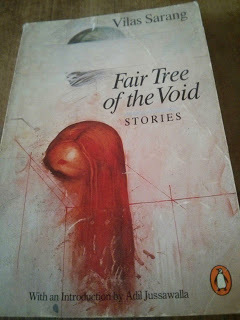 Writes Salil Tripathi/ on Fair Tree of the Void by Vilas Sarang (Penguin India)
Writes Salil Tripathi/ on Fair Tree of the Void by Vilas Sarang (Penguin India)Samuel Beckett required two men on a country road to create the stark symbol of 20th century absurdity in Waiting for Godot. Vilas Sarang is more economical. Give him a man and a bare, cheerless room. And instead of adding objects to complete the picture, Sarang would find in the still life sufficient inducement to create plausible yet absurd tales which are part-dream, part-reality, with a wry undertone of black humour. Yet Sarang writes with precision-all that' s essential i s there, and everything that isn't necessary is sliced out.
The lonely man in the room is not pining for a phone call or a letter. He is happy swatting flies and takes great relish in recounting those experiences. Or he tortures an insect between the hour and minute hands of a clock, in the process losing all possible relationship with time.
If the man does receive letters, they're usually in a series, signed by different names, but possibly from the same person. Then, again, they may not be. The letters, in fact, may never have been written. But it doesn't matter one way or the other.
In fact, nothing is certain in these stories, translated from the Marathi. Each tale could be the product of strange dreams, the kind that scare American sophomores to go running to their analysts. Sarang is a graduate of the school of Kafka and Camus, but despite that occidental influence, he is firmly rooted in the Indian milieu.
More here/
Published on May 07, 2015 04:49
Eduardo Galeano
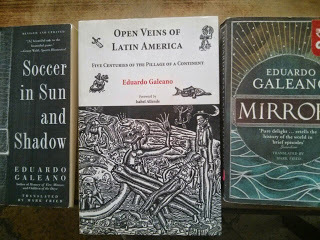 Eduardo Hughes Galeano (Spanish pronunciation: [eˈðwarðo ɣaleˈano]; 3 September 1940 – 13 April 2015) was a Uruguayan journalist, writer and novelist considered, among other things, "global soccer's pre-eminent man of letters" and "a literary giant of the Latin American left".
Eduardo Hughes Galeano (Spanish pronunciation: [eˈðwarðo ɣaleˈano]; 3 September 1940 – 13 April 2015) was a Uruguayan journalist, writer and novelist considered, among other things, "global soccer's pre-eminent man of letters" and "a literary giant of the Latin American left".Galeano's best-known works are Las venas abiertas de América Latina (Open Veins of Latin America, 1971) and Memoria del fuego (Memory of Fire Trilogy, 1982–6). "I'm a writer," the author once said of himself, "obsessed with remembering, with remembering the past of America and above all that of Latin America, intimate land condemned to amnesia."
/
Las venas abiertas de América Latina (Open Veins of Latin America), a history of the region from the time of Columbus from a left-wing perspective, is considered one of Galeano's best-known works. An English-language translation by Cedric Belfrage gained some popularity in the Anglosphere after Venezuelan President Hugo Chávez gave it as a gift to U.S. President Barack Obama in 2009.
Galeano was also an avid fan of football, writing most notably about it in Football in Sun and Shadow (El fútbol a sol y sombra). In a retrospective for SB Nation after Galeano's death, football writer Andi Thomas described the work—a history of the sport, as well as an outlet for the author's own experiences with the sport and his political polemics—as "one of the greatest books about football ever written".
More Here/
Published on May 07, 2015 04:48
May 2, 2015
People will continue to write poetry whether it ‘matters’...
People will continue to write poetry whether it ‘matters’ or not. It is a response to an inner compulsion and acts as an internal stabiliser. It freshens up language. And politically too, it has mattered. Think of Pablo Neruda, the poems of Dylan Thomas during World War II, of Paul Celan, Antonin Bartuzek, Nelly Sachs, Hans Magnus Enzensberger and so many others.
Goa-based poet Manohar Shetty, in an interview with Dibyajyoti Sarma, answers ‘what it means to be a poet in today’s chaotic time?’
/
When people talk about your poetry, the first thing they mention is the animal imagery. How did you start with it? I’m sure the Panchatantra was not an influence.
No, the Panchatantra was not an influence, but perhaps the shadows of Ted Hughes and DH Lawrence were. Animals are a useful vehicle to comment on the human animal. Lately, I’ve been running out of creatures great and small. Perhaps I need to invent my own imaginary creatures.
Your poetry seems to be obsessed with spaces. Your first book was called A Guarded Space, and the new HarperCollins book is Living Room. There is also Domestic Creatures…
I don’t think I’m obsessed with ‘spaces’, only in terms of feeling constrained and locked-in. Oddly enough, poetry opens up the world. It’s like a safety valve.
I am guessing it has to do with how and where you live. Is this why you have two books called Personal Effects and Body Language?
I’m not much of a traveller, at least in physical terms. Mumbai, Goa, Mangalore — that’s my coastal territory and that’s big enough, though I spent two quite unhappy years working in Bengaluru.
Read the complete interview .
Goa-based poet Manohar Shetty, in an interview with Dibyajyoti Sarma, answers ‘what it means to be a poet in today’s chaotic time?’
/
When people talk about your poetry, the first thing they mention is the animal imagery. How did you start with it? I’m sure the Panchatantra was not an influence.
No, the Panchatantra was not an influence, but perhaps the shadows of Ted Hughes and DH Lawrence were. Animals are a useful vehicle to comment on the human animal. Lately, I’ve been running out of creatures great and small. Perhaps I need to invent my own imaginary creatures.
Your poetry seems to be obsessed with spaces. Your first book was called A Guarded Space, and the new HarperCollins book is Living Room. There is also Domestic Creatures…
I don’t think I’m obsessed with ‘spaces’, only in terms of feeling constrained and locked-in. Oddly enough, poetry opens up the world. It’s like a safety valve.
I am guessing it has to do with how and where you live. Is this why you have two books called Personal Effects and Body Language?
I’m not much of a traveller, at least in physical terms. Mumbai, Goa, Mangalore — that’s my coastal territory and that’s big enough, though I spent two quite unhappy years working in Bengaluru.
Read the complete interview .
Published on May 02, 2015 22:46



